.
Origin of the Name
There are various guesses and stories of how the project got such an unconventional name, related to the unknown and occult. Pye Wacket was the name of the cat who was the familiar to the witch played by Kim Novak in the film Bell Book and Candle. The comedy was released on Christmas day 1958, with the love interest played by Strategic Air Command Colonel James Stewart (promoted to Brigadier General on 23 July 1959). One story (via Dennis Jenkins) was that the name was selected by a secretary in the project office who had seen the movie. Another (via Joel Carpenter) was that Colonel Stewart had a hand in the naming. He certainly had the connections to be aware of the program and was present at the roll-out of the B-70 on 11 May 1964...
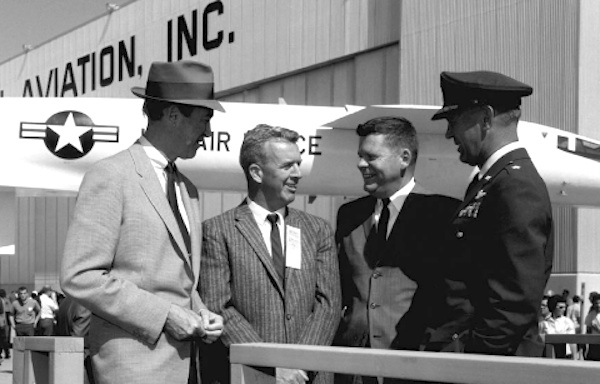
Either way, Pye Wacket was the small protector of her mistress:
Stewart: Is that your cat? I've seen him on the stairs, watching me come in and out. What's his name?
Novak: Pyewacket.
Stewart: How's that?
Novak: Pyewacket.
Stewart: Pyewacket. Well, how do you do? (Pyewacket lashes out as he reaches to stroke her) Bad cat!
Novak: I'm glad he didn't scratch you.
Stewart: No. That's all right.
Novak: He doesn't have very good manners. It's just because you're a stranger.
However the name goes back much farther. The writer of the original 1950 stage play had come across the memoirs and court transcripts of the infamous Matthew Hopkins, the Witchfinder General, responsible for the trial and execution of over 300 women as witches in 17th Century England. In 1644 Hopkins began his murderous three-year career by prosecuting a woman who was assisted by several familiars and imps, one of then named Pyewacket:

...in March 1644 ... this Witch confessed severall other Witches, from whom she had her Imps, and named ... as Elemanzer, Pyewacket, Peckin the Crown, Grizzel Greedigut, &c. which no mortall could invent ... 29 were condemned at once, 4 brought 25 Miles to be hanged ... for sending the Devill like a Beare to kill him in his garden...
No matter the origin, the name gave the black project a permanent linkage with the fantastic.
The Pye Wacket Project Team
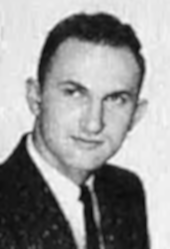
Convair selected 26-year old Preliminary Design Engineer Earl Eugene Honeywell to head the project within the company. Honeywell was born on 15 February 1933 in Cherryville, Kansas to George and Mary Honeywell. His father was a repairman and headed a family of three sons and two daughters. Earl enlisted in the Marine Corps Reserve at age 17 on 26 June 1950, the day after the outbreak of the Korean War. After a six month deferment, he was activated, trained, and sent to Korea. He served with VMF-312, a Marine fighter squadron equipped with F4U Corsair fighters, which flew continuous combat missions from the carriers Bataan, Bairoko, and Sicily for the duration of the war. He remained in the Marine reserves until 18 August 1958.
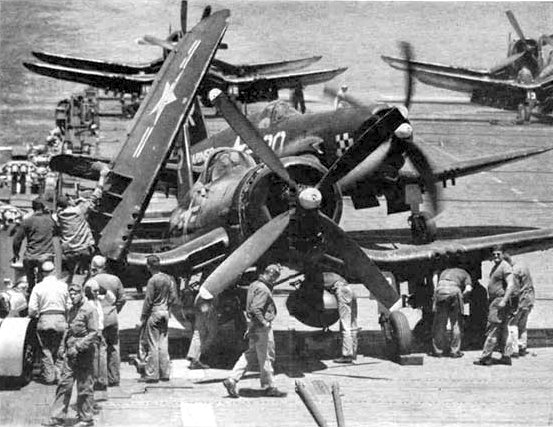
After the war he entered the University of Wisconsin, Madison, where he met his future wife. Claudette Ann Elwell, who was born on 14 May 1934 in Imperial, Nebraska. They were married in Council Bluffs, Iowa, on 25 July 1953. Earl and his wife moved to Seattle, Washington, where he studied aeronautical engineering at the University of Washington while working as a draftsman at Pacific Northwest Airlines.
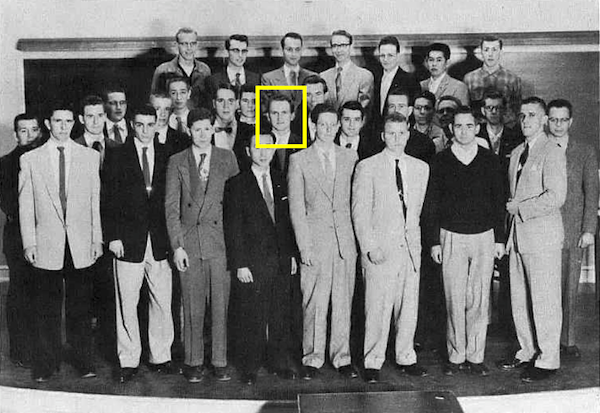
Following graduation in 1957, he was hired by Convair Pomona, and the family, now including their first daughter, moved to Pomona, California. A second daughter was born in September 1957, just months after their arrival.
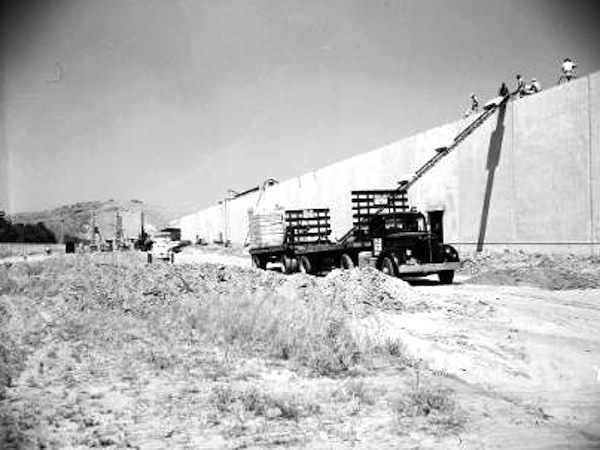
Convair Pomona had been built in 1952 to handle the company's burgeoning work for the US Navy's surface-to-air missile programs. Here the mainstays of the US Navy's air defense, the Terrier and Talos missiles, were built. In the process Pomona developed a broad experience base in rocket propulsion and missile guidance. In the mid-1950's Convair Pomona sought to branch out, snaring the US Army's Redeye program for the first man-launched infrared-guided surface-to-air missile in 1958.
Honeywell must have been an impressive young man, because he was tagged to lead the Pye Wacket project at Convair (During the course of the program Convair was purchased by General Dynamics. Both corporate names appeared on various documents during the transition).
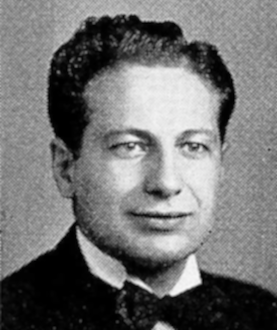
In the critical aerodynamics area he was supported by William Hatalsky, who was born on January 7, 1924 in Russelton, Pennsylania, to Ephimia and Wasilli Hatalsky. His parents had emigrated from Zelezniki, Russia, in 1913. His father moved the family to Hamtramck, Michigan where he found work as a bolt tightener in an automobile factory. William served during World War II as an enlisted man in the US Army in the European theater. After the war he studied aeronautical engineering at the University of Detroit, graduating with a Master's Degree from the University of Michigan in February 1951 and marrying Virginia Dromowicz on the same day. His 38-year career as an aerodynamicist begain with work on the Boeing B-47 bomber, followed by stints at Aerojet General in El Monte, California, before coming to Convair Pomona. Hatalsky was known for his sharp wit and sense of humor.
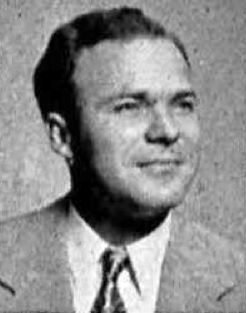
Also assisting Honeywell was Edward Velton, born in Birmingham, Alabama on March 4, 1926. He served in the US Army as a Flight Engineer in World War II, and like Hatalsky graduated from the University of Michigan with a Master's of Science in Engineering. He was became an expert at Pomona in preparation of proposals for the government. In later life he authored four professional books and became a consultant on Proposal Development.
The second lead on the project was a D R Geise, for whom no information can be found. All of these young engineers and their families lived in new housing developments in nearby Whittier, California.
Pye Wacket Phase I
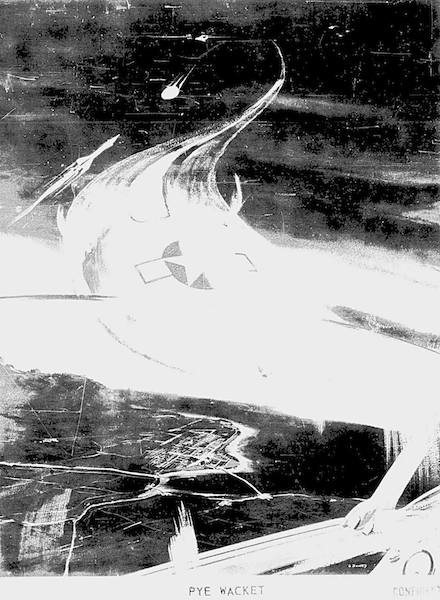
The Phase I report, issued on 14 January 1960, was extremely comprehensive considering the time allotted. This may have represented prior work. Convair devoted more than three years of effort on company funds on the Redeye missile before obtaining the contract. The same may have been true for Pye Wacket. In this view, the Eglin work represented the government independently verifying the design before releasing funding to Convair to take it to the hardware stage under the charade of a competitive contract. This was relatively common practice. However if true, it would be rather disingenuous for Convair to claim that the idea "...originated with the (Eglin) Technical Planning Group..."
In any case, the Phase I report elaborated on the earlier aerodynamic analysis and testing with computer work and additional wind tunnel tests. The design was compared with existing missiles and found far superior. Convair prepared preliminary design layouts, built a mockup, and did proof-of-concept electronics packaging. Detailed studies were conducted in the areas of aerodynamics (including wind tunnel tests), aerodynamic heating, propulsion, control systems, structures, and missile performance. The conclusion was that Convair's 'Model III', a variation on Eglin's Model II "blunted lenticular" configuration, had far and away the best performance. Limited guidance and launch studies were conducted. Convair concluded that Pye Wacket "...showed significant advantages for the lenticular configuration, compared to conventional missiles, particularly as related to omnidirectional launch and high maneuver capability".
Nominal vehicle configurations were determined, based on the parametric data generated, and design feasibility layouts with supporting data were shown for these configurations. Design scaling information was determined for preliminary weight and performance estimates of various-size Pye Wacket missiles. A mockup of Convair's recommended 36-inch diameter version of the missile was built.
Based on these analytical studies and wind tunnel tests, Convair's improved Model III shape was developed. The drag, lift, and stability characteristics of this configuration were far superior to Eglin's Model I and Model II. These performance improvements were achieved primarily by moving the maximum thickness point of the missile to the aft end. Configurations with a thickness to diameter ratio of 14% and 21% were studied in detail. The 21% configuration naturally provided more volume for internal components.
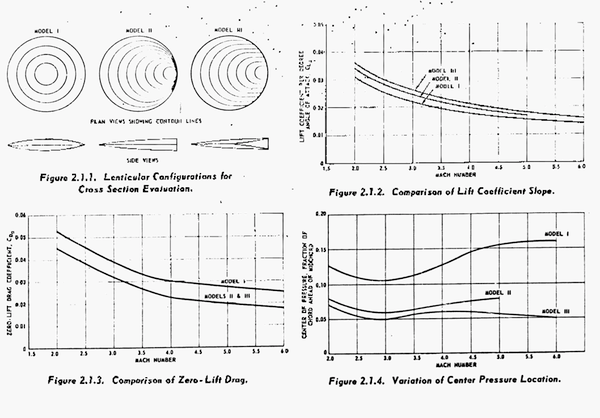
The Model III aerodynamics were compared with conventional missile configurations. Pye Wacket was found to turn in half the radius of the conventional missiles used in the comparisons.
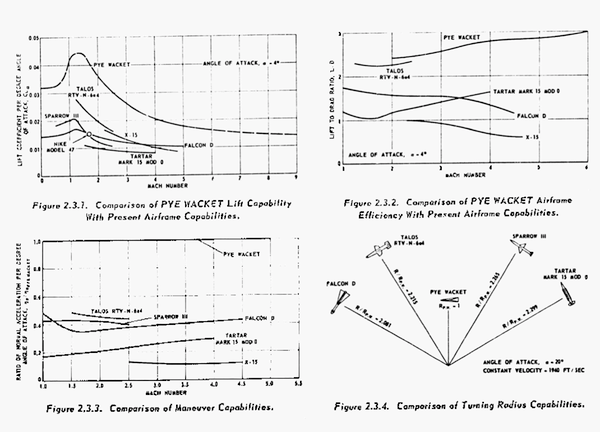
The performance investigation showed that using omnidirectional launch, protection for manned aircraft could be obtained for all approaches of attack. Depending on the altitude of the bomber, air-to-air ranges of 8 to 24 miles could be obtained in all directions from the bomber. A reduction in missile size from 60 inches to 36 inches could be made without an excessive penalty in stand-off distance if advanced techniques and materials were used. High maneuver capabilities were available from the Pye Wacket configuration at all altitudes studied. Detailed studies of required ejection forces using Convair's extensive data from their supersonic B-58 bomber showed clearance from the bomber after launch in any direction would not be an issue.
Propulsion
Trade studies were undertaken to consider the feasibility of turbojet, turbo-rocket, ramjet, external combustion ramjet, liquid rocket, and solid rocket propulsion for Pye Wacket. The turbojet systems could not function at the Mach 3 to 7 envisioned for Pye Wacket. A ramjet would require too large an intake area and be too heavy. The external combustion ramjet was a possibility, but any operational use was too far in the future. That left the liquid or solid rocket approaches.
Either a liquid-rocket or a unique pancake-shaped solid rocket motor would take full advantage of the internal volume of the saucer. Multiple tapered solid-rocket motors or cylindrical solid rocket motors would require less development, but would not take full advantage of the internal volume.
The multiple cylinder solid propellant configuration would have the shortest development time and risk. A survey of then-available rocket motors showed existing propellants were adequate. Only the swivelling nozzle manifold represented an extension of the state-of-the-art.
The pancake solid propellant motor represented a greater development risk. Problems to be solved included design of a lightweight pressure vessel and a suitable grain configuration; methods of coring and casting such a grain; propellant with a reasonable environmental temperature range; and reliable ignition of the unusual configuration.
The pancake motor casing would naturally be heavier than conventional solid motors to contain the 250 psia internal pressure. The propellant fraction for a 21% pancake motor design would be 0.689 compared to 0.798 for conventional cylindrical motors. However it would provide 426 pounds of propellant, and 112,038 pound-sec of impulse, more than double that of any arrangement of cylindrical motors.
The low-chamber-pressure pressure-fed liquid propellant alternate would be similar to storable liquid systems using pressurized tanks such as the Guardian series developed by Thiokol's Reaction Motors Division. The primary problem, as in the pancake solid, would be in the pressure vessel design. Attention woud be required to insure positive expulsion of the propellants at all attitudes and under a high-G environment. Since engine operating duration would be short, an insulated chamber or one employing film cooling would be adequate. Stable operation at low chamber pressures was verified on propulsion systems for space vehicles that operated satisfactorily at pressures less than 100 PSI. A liquid propellant system would have only 4% better performance but be more complex, expensive, and have storage and maintenance issues when kept in readiness for years under extreme temperature variations.
Preliminary proposals obtained from a number of major rocket engine manufacturers substantiated the performance numbers used in the study. The performance numbers were realistic and attainable in the 1961-62 time period. Successful ignition and launch of rocket engines pointed into high velocity air streams had already been demonstrated in the Wagtail program. Convair concluded that the pancake-solid rocket motor was the preferred approach, although a liquid rocket system was also designed.
Control Systems
Convair's Pye Wacket control system investigation found that the aerodynamic control surfaces planned by Eglin were actually unsatisfactory for use on a circular planform missile. Reaction controls using fixed auxiliary jets were feasible and provided acceptable response times and a simple autopilot design. Maneuvers unobtainable with conventional configurations were possible with Pye Wacket using reaction controls at extremely high altitudes.
The launch sequence differed from that envisioned by Eglin and used in the B-70 study. Before launch, the missile would be oriented in azimuth, on the launcher, so that the missile's infrared seeker would be pointed at the target. This seeker would be behind conformal windows flush with the skin of the missile (therefore no seeker cover had to be jettisoned as in the earlier design).
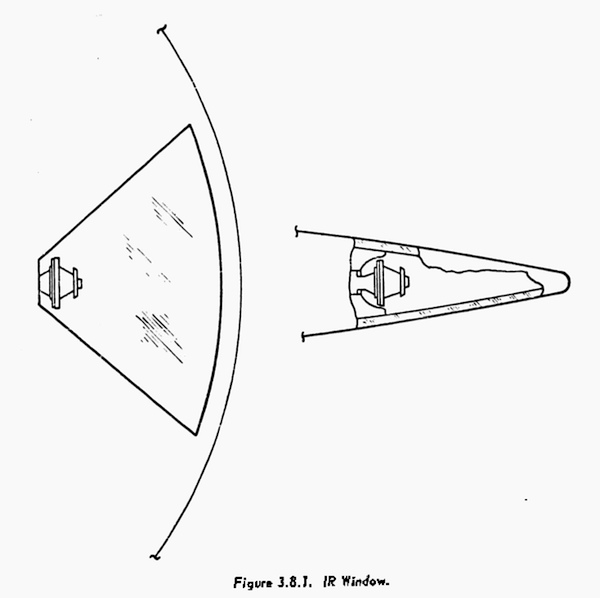
Only after the seeker locked onto the target would the missile will be ejected. The omnidirectional missile would be subjected to a very large angle of aerodynamic yaw. In the worse case, it could be ejected pointing opposite the direction of flight of a Mach 3 bomber. Therefore the missile was initially stabilized using an inertial device with three rate gyros until thrust from the rocket motor built up forward speed.
After that point, guidance switched over to inputs from the infrared seeker. Bang-bang reaction controls would control the roll and pitch of the saucer. Yaw changes would be obtained by rolling to the required attitude and then pitching to obtain the required yaw maneuver. The proposed combination of seeker and autopilot give proportional navigation homing. The simple missile instrumentation included the seeker, an aerodynamic yaw-sensor, and three rate gyros with electronic integration of all three rate gyros during the launch phase.
Structures and Thermal Protection
Pye Wacket would be subject to very high aerodynamic heating during its high-speed, high-G intercept. Use of a teflon ablative covering on the missile's skin was found to be superior to heavier and more complex transpiration cooling. Only 30 pounds of teflon would be required for the largest 60-inch diameter configuration. The sharp leading edge would require a graphite cover for the bomber defense mission. Other applications requiring less missile performance could use a blunt leading edge covered with teflon ablative material.
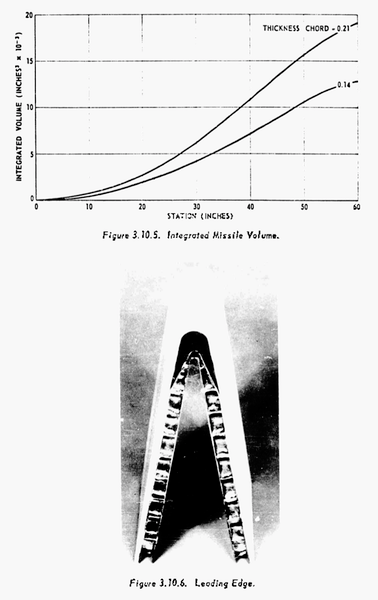
Follow-on Pye Wacket designs could use a double wall consisting of skin in which a liquid coolant was packaged. The coolant would boil off as heat was absorbed. The vapor would be ejected through the skin, but ducted to the aft end of the missile to contribute thrust.
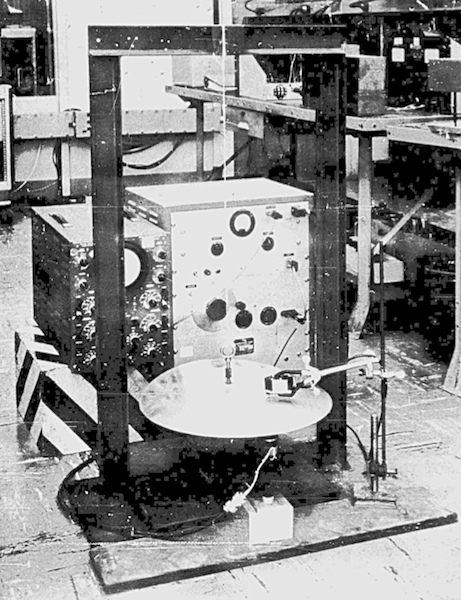
Phase I work included vibration testing of a structural prototype. The material investigation selected B-120 titanium for the structure. This material could be formed, machined, chemically etched, and molded. It possessed strength-to-weight advantages of 20 to 60 percent over 15-7Mo stainless steel in the temperature range of 800 deg F to 1000 deg F. Stabilization of the upper and lower pressure vessel surfaces was accomplished by posts. Posts were selected because they could be inserted after the tank was assembled, and did not sectionalize the tank as would bulkheads.
Aero-elastic studied concluded that that there would be no serious coupling with the autopilot. Some form of internal panel support through use of a corrugated inner skin, additional ribs, or sandwich type construction was required to prevent destructive panel flutter in a large portion of the flight profile. Honeycomb was shown to be 20% lighter than corrugated skin.
Detailed Design
A nominal 60-inch diameter missile was selected for design layouts due to the emphasis placed on this dimension by Eglin. Only thickness-to-chord ratios of 14 percent and 21 percent were considered for these layouts since the performance of missiles with these thickness ratios spanned the range of interest based on maximum range capability, minimum time-to-target intercept, and packaging limits.
Using these two thickness ratios, approximate missile weights and performance capabilities were determined as functions of the missile diameter. The range of missile diameters considered was limited to 30 inches to 120 inches. The scaling was accomplished by utilizing the weight determination of the nominal 60-inch diameter missiles of 14 percent and 21 percent thickness ratios as the bases for all scaled weight determinations.
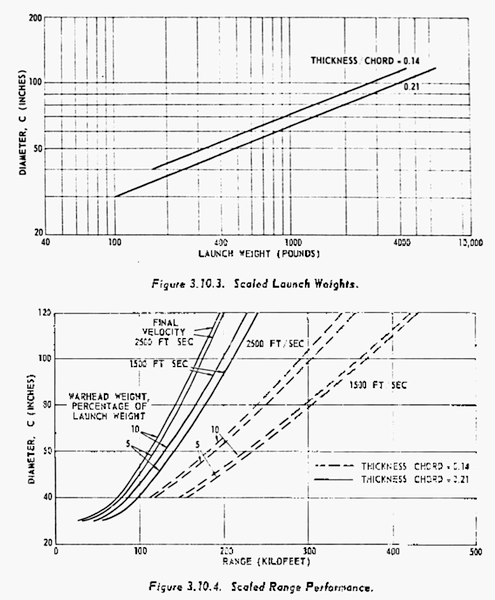
Design scaling employed the latest techniques and materials which could be applied to missile design immediately. By employing advanced techniques and materials a missile of 36 inches diameter could approach the performance of the nominal 60-inch diameter 21 percent missile. Therefore a detailed layout was also made of a 36-inch diameter 21 percent missile.
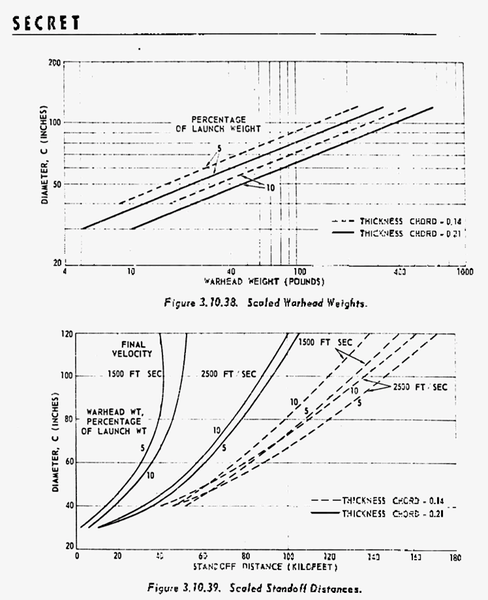
This smaller size could reduce missile cost, increase the number of missiles which carried by a particular aircraft, and minimize the handling, stowage, and launching problems.
Quelle: Encyclopedia Astronautica
